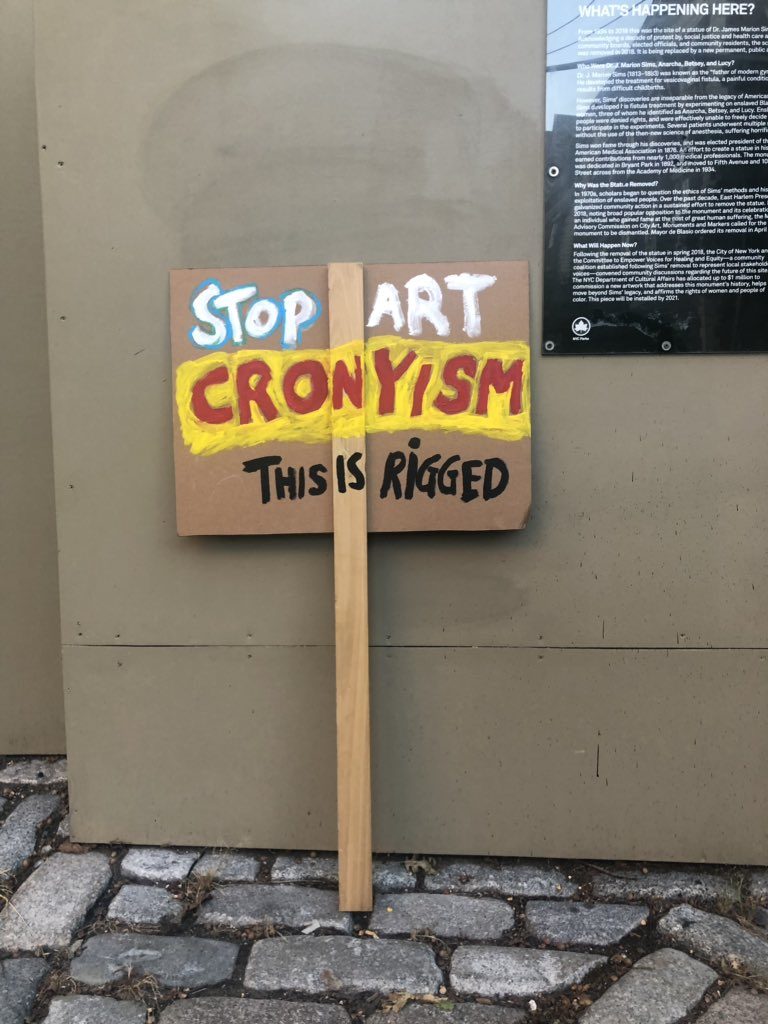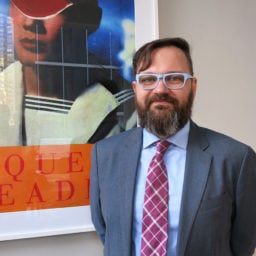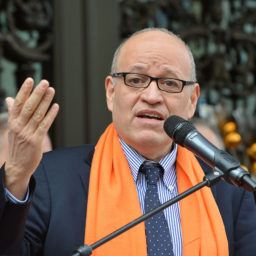New York’s public art program has never been more ambitious—or more controversial—than it was this year, as the city worked to expand the number of monuments that honored women and reckon with others that memorialize shameful histories.
On Tuesday, the city council held a hearing to re-examine its approach—and consider whether it is ever possible to have public art without controversy. “What folks want is a little more transparency around the public art process,” said Councilmember Jimmy Van Bramer, who serves as the chair of the legislature’s committee on cultural affairs, at the start of the hearing.
Cultural Affairs Commissioner Tom Finkelpearl—who abruptly announced his resignation this fall after five years in the post—aimed to shed more light on the process. (He received a warm welcome by artists including Hank Willis Thomas and Jorge Luis Rodriguez, who attended in a show of support.) In his last official appearance before the legislative body, Finkelpearl largely defended the public art process, but admitted that it could be more transparent.
The department, he said, has already implemented an extra meeting for panelists and community stakeholders to interface for “all commissions and sensitive projects.” At the same time, he added: “Having an extra panel meeting is going to be helpful… but I also don’t think that there’s any way to avoid controversy in public art.”
Indeed, controversies have been in ample supply this year. Over the summer, several politicians criticized the decision-making process behind the de Blasio administration’s $10 million She Built NYC program—an initiative to commission statues to honor women’s history—as opaque. The initiative later became tabloid fodder after the actor Chazz Palmentieri called the mayor’s wife, Chirlane McCray, “racist” for not honoring Mother Cabrini, an Italian-American Catholic saint who received the most nominations from the public vote soliciting women to memorialize.
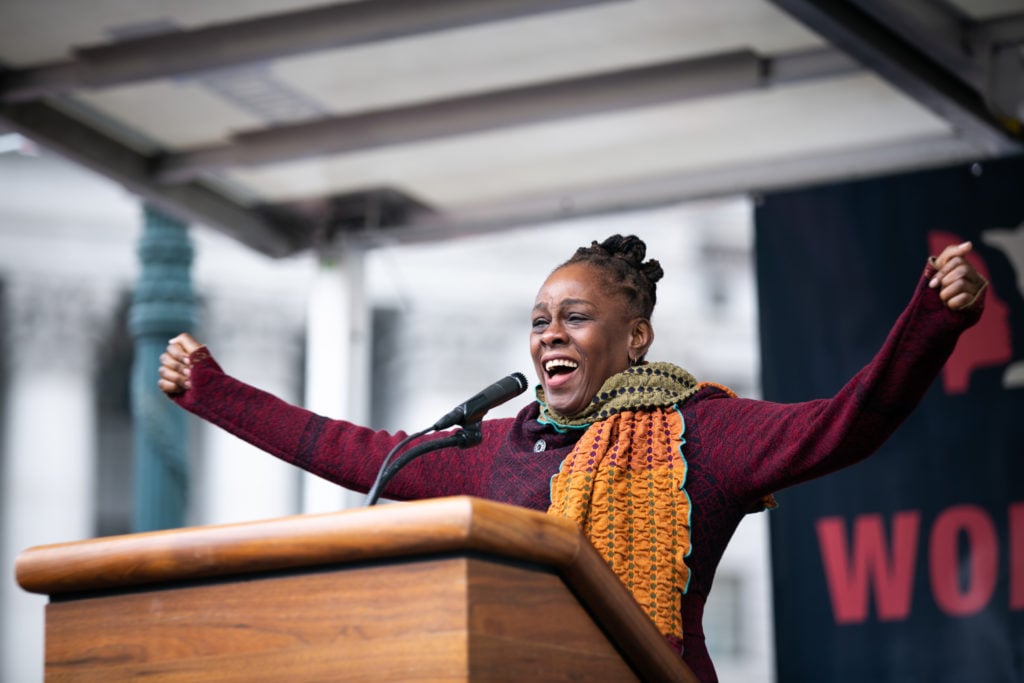
Chirlane McCray speaks during the Women’s Unity Rally at Foley Square. (Photo by Karla Ann Cote/NurPhoto via Getty Images)
Back in October, East Harlem residents also accused the Department of Cultural Affairs of bungling the process for selecting an artist create a new work to replace the statue of Marion J. Sims, the 19th-century doctor who made his gynecological advances by experimenting on enslaved black women. A few weeks later, Mayor Bill de Blasio announced that Finkelpearl would be resigning, though several sources within the administration say that the culture commissioner was “pushed out” to divert criticism from New York’s first lady Chirlane McCray. (Spokespeople for the city have denied this account; De Blasio and Finkelpearl have said publicly that the decision to part was mutual.)
But as Finkelpearl testified this morning, it was McCray and deputy mayor Alicia Glen who were ultimately responsible for choosing the women who would be honored with statues. Addressing the Sims controversy, Finkelpearl said that his staff “took a hard look” at what happened.
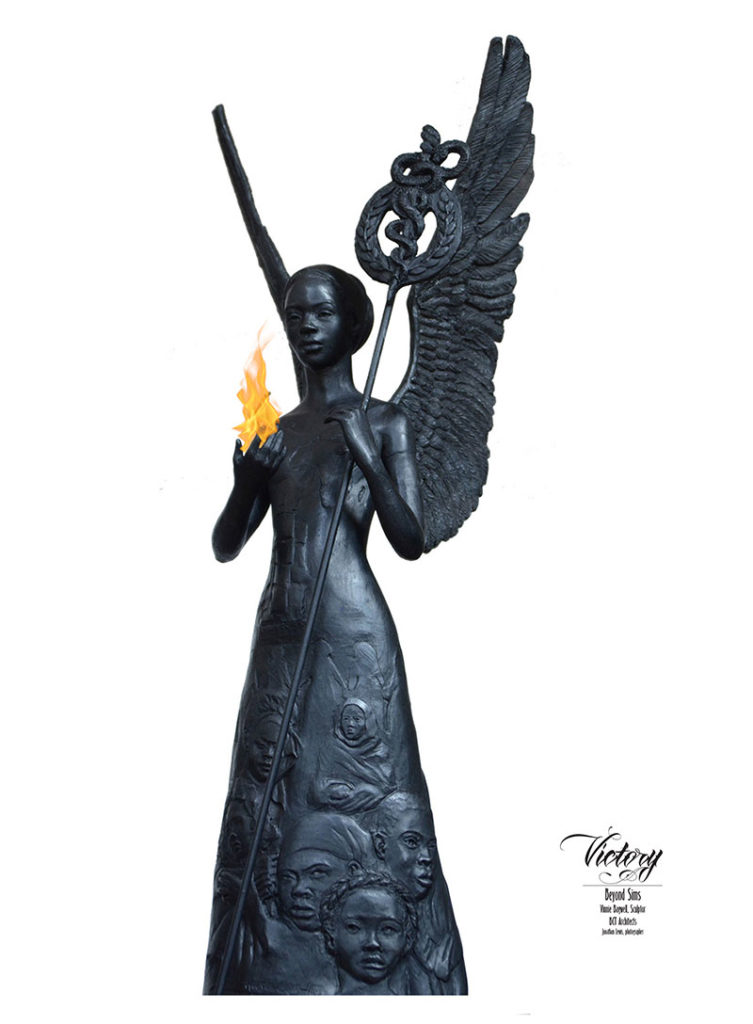
Vinnie Bagwell, Victory Beyond Sims (rendering). Courtesy of the artist.
Others who testified before the city council scrutinized the Percent for Art program, which was established in 1982 and processes the majority of public artworks erected in the city. The initiative requires that one percent of budgets for eligible city-funded construction projects be spent on art. Although virtually every speaker praised the program’s current director, Kendal Henry, they also described the agency as overextended and understaffed. Only three employees are tasked with handling more than 125 active commissions worth millions of taxpayer dollars.
Janet Zweig, an artist who has worked with the agency, put the numbers into stark relief by comparing them with other cities: San Francisco, she said, has 10 staff members overseeing 75 projects, while Austin has seven people overseeing 70 projects, and Denver has five people overseeing 40.
Ambition has historically stymied efficiency for the city’s Percent for Art program, according to former directors who testified at the oversight hearing. “With over 100 projects in the program’s pipeline and dozens more on the docket during the years I was there,” said Charlotte Cohen, who served as director from 1996 to 2005, “it was challenging to maintain the deep involvement and focus these projects demand and deserve.”
Despite all the controversy, Jennifer McGregor, Percent for Art’s first director, is holding out hope for the program she helped build. “The staff is strong, but let’s be creative about how to reinforce their efforts,” she testified. “Now is the time to review what is needed to steward these important, sensitive projects and to provide the necessary support in terms of expertise and time.”
